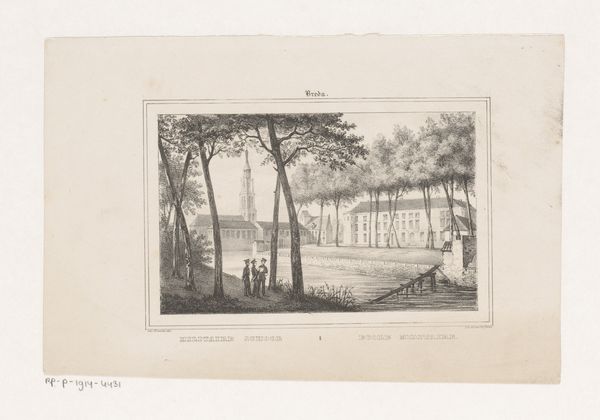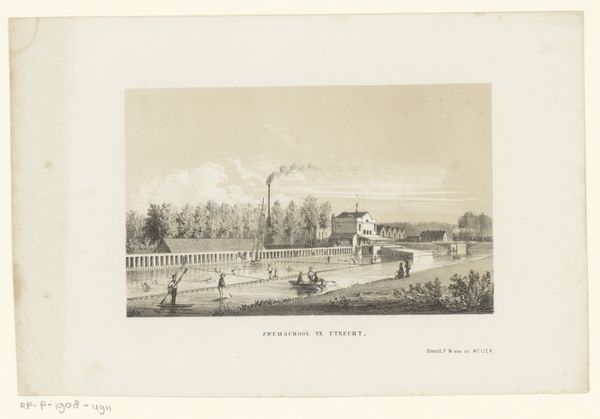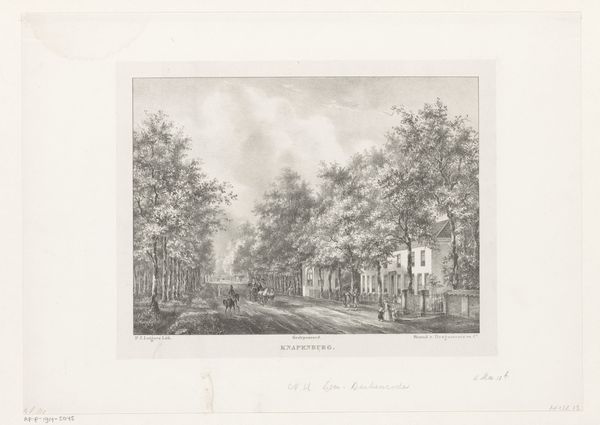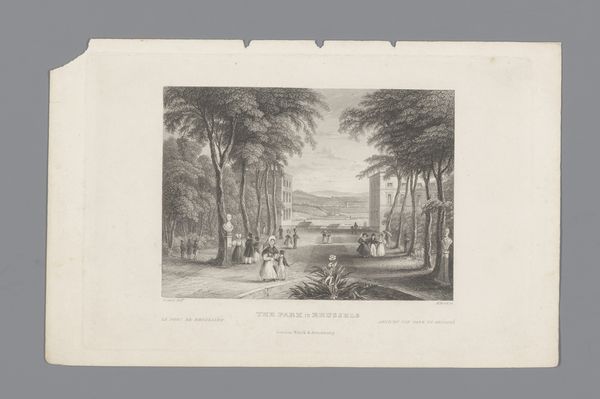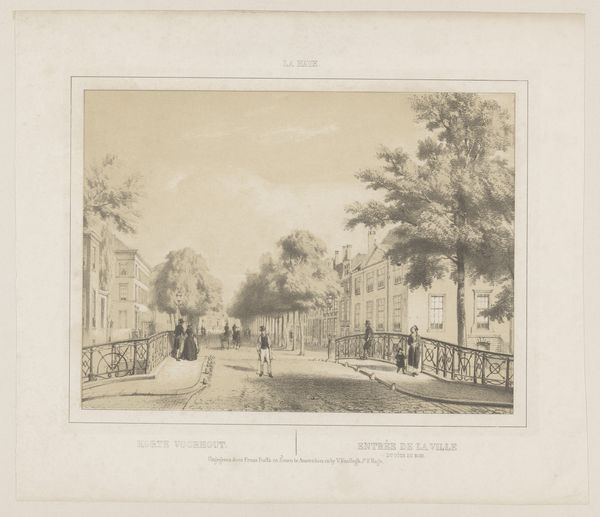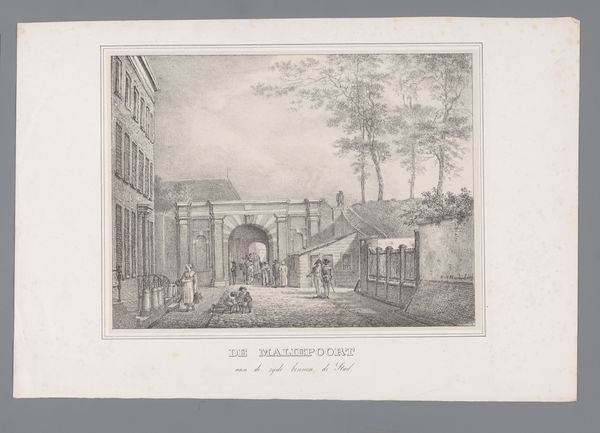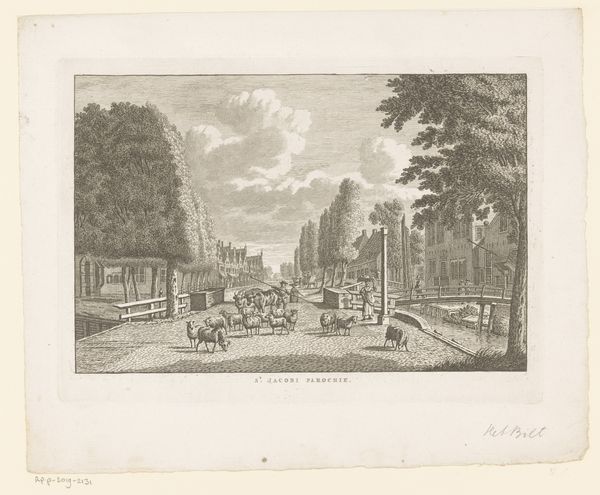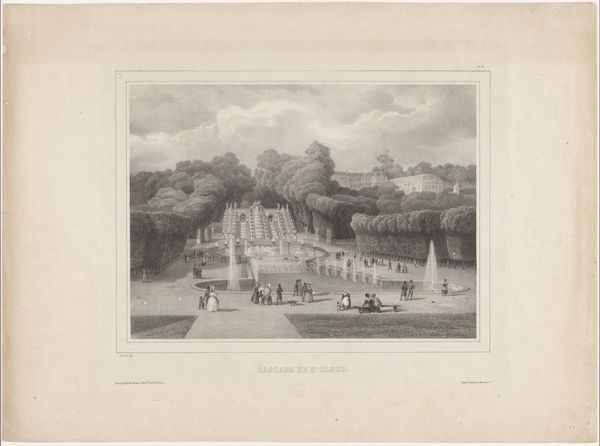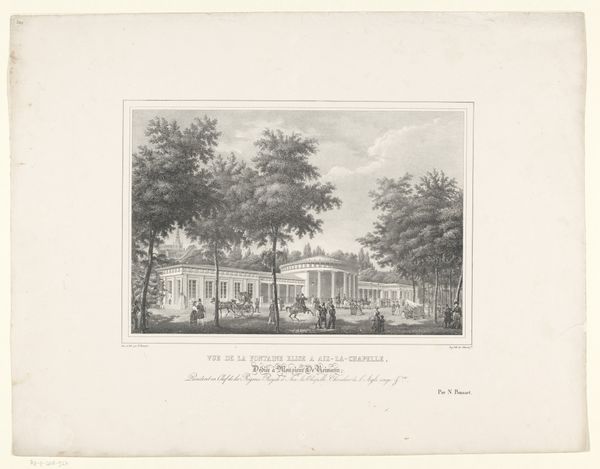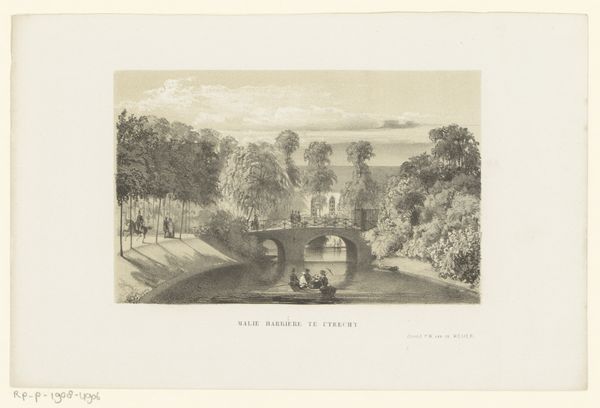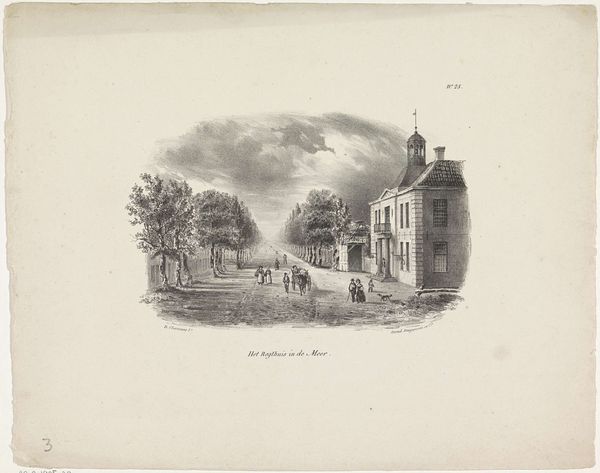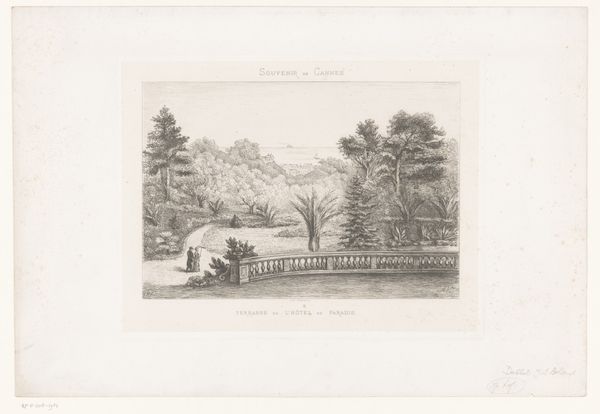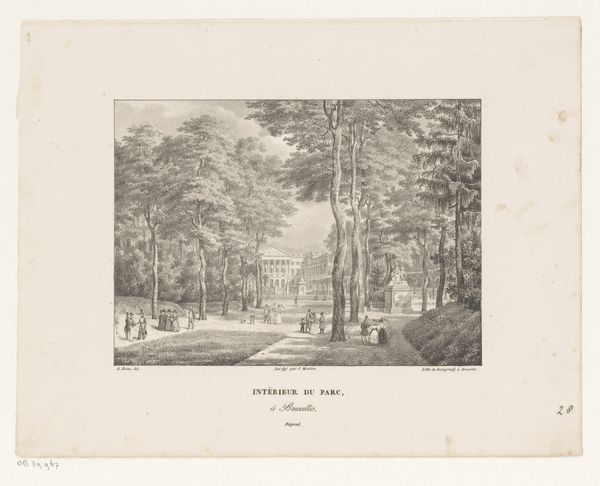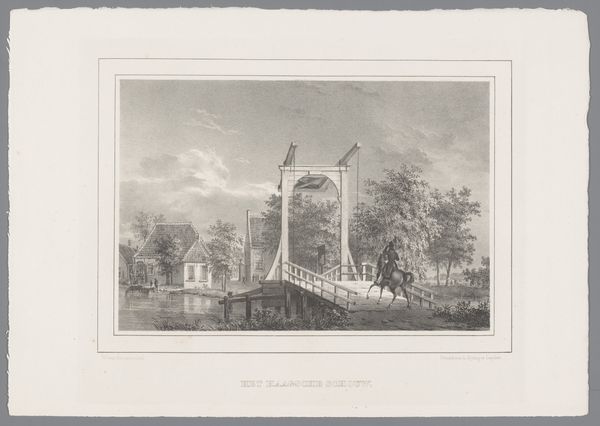
print, engraving
# print
#
landscape
#
romanticism
#
cityscape
#
genre-painting
#
engraving
Dimensions: height 270 mm, width 360 mm
Copyright: Rijks Museum: Open Domain
Curator: Looking at this engraving, it seems quite tranquil, almost frozen in time. The light and shadow play across the water and architecture create a gentle, nostalgic atmosphere. Editor: That’s a perfect word for it: nostalgic. This is "Tentjacht te Zaandam" or "Pleasure Yacht at Zaandam," a print by Hendrik Greeven, made sometime between 1809 and 1854. It portrays a seemingly everyday scene of a group returning from what’s described below the image as ‘the Limonade à Zaandam.' It's likely a leisure activity reserved for the wealthy at the time. Curator: Absolutely, the clothing alone suggests a specific social class, highlighting divisions that underpinned 19th-century Dutch society. Their leisure stands in stark contrast to the struggles of those excluded from such scenes. Was Zaandam a well-known place of leisure for the wealthy? Editor: Yes, Zaandam was indeed a popular retreat. Prints like these catered to a market that valued images reflecting and reinforcing social hierarchies. This artwork isn’t merely a landscape but a carefully constructed presentation of bourgeois leisure within a particular socio-economic frame. Note how the buildings are depicted. The skyline is more suggested than clearly rendered and all is harmonious, which makes this cityscape lean into the romantic tradition. Curator: And how! Romanticism is indeed quite present in this image, and especially in this treatment of the relationship between social order and the “natural” landscape. Is nature truly accessible for all? Is this moment truly available for all, regardless of their sex, class or ethnicity? Editor: I see your point. The figures here almost become performers in a constructed tableau of idyllic living, intended for an audience well-versed in its unspoken codes. The print, then, served as both record and endorsement of this specific world view. It presents an ordered scene but it also conceals labor, inequality. Curator: That it does. A perfect illustration of how art participates in building collective imaginaries, constructing, justifying, and selling idealized pictures of society as a way to deflect from its real complexities and injustices. Editor: Absolutely. Understanding this, we can move beyond simply admiring the tranquil composition to analyzing how such imagery actively shaped and upheld power dynamics of its time.
Comments
No comments
Be the first to comment and join the conversation on the ultimate creative platform.
